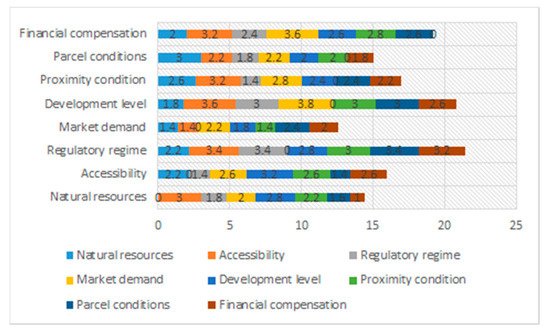
| Version | Summary | Created by | Modification | Content Size | Created at | Operation |
|---|---|---|---|---|---|---|
| 1 | Fu-Hsuan Chen | + 1394 word(s) | 1394 | 2021-10-28 15:56:47 | | | |
| 2 | Fu-Hsuan Chen | + 1418 word(s) | 1418 | 2021-10-28 16:01:33 | | | | |
| 3 | Fu-Hsuan Chen | + 1702 word(s) | 1702 | 2021-10-28 16:03:09 | | | | |
| 4 | Fu-Hsuan Chen | Meta information modification | 1702 | 2021-10-28 16:14:33 | | | | |
| 5 | Fu-Hsuan Chen | + 502 word(s) | 2204 | 2021-10-28 16:17:37 | | |
Video Upload Options
By the establishment of science parks, Taiwan has achieved the ability to form high-tech industrial clusters and provided an environment for sustainable industrial development. The sustainable development generated by the science parks indicates Taiwan’s transition from state leadership (strong state, weak society) to state guidance (strong state, strong society). However, despite its contribution to the long-term development of Taiwan’s economy, the CTSP development has been accompanied by environmental downsides, risking the sustainability goals. In conclusion, the state’s role in making CTSP successful and sustainable, the determining role of regulatory regimes, and moving from state leadership to state guidance are emphasized.
1. Introduction
2.Developmental State
3.Taiwan’s SDGs and the Political Regime

4. Conclusions
- Stubbs, R. What ever happened to the East Asian Developmental State? The unfolding debate. Pac. Rev. 2009, 22, 1–22. [Google Scholar] [CrossRef]
- Wade, R.H. The Developmental State: Dead or Alive? Dev. Chang. 2018, 49, 518–546. [Google Scholar] [CrossRef]
- Chen, C.-J.; Wu, H.-L.; Lin, B.-W. Evaluating the development of high-tech industries: Taiwan’s science park. Technol. Forecast. Soc. Chang. 2006, 73, 452–465. [Google Scholar] [CrossRef]
- Zhu, H.; Chung, C.-N. Portfolios of Political Ties and Business Group Strategy in Emerging Economies. Adm. Sci. Q. 2014, 59, 599–638. [Google Scholar] [CrossRef]
- Chen, C.-P.; Chien, C.-F.; Lai, C.-T. Cluster policies and industry development in the Hsinchu Science Park: A retrospective review after 30 years. Innovation 2013, 15, 416–436. [Google Scholar] [CrossRef]
- Giddings, B.; Hopwood, B.; O’Brien, G. Environment, economy and society: Fitting them together into sustainable development. Sustain. Dev. 2002, 10, 187–196. [Google Scholar] [CrossRef]
- Brown, B.J.; Hanson, M.E.; Liverman, D.M.; Merideth, R.W., Jr. Global sustainability: Toward definition. Environ. Manag. 1987, 11, 713–719. [Google Scholar] [CrossRef]
- Keeble, B.R. The Brundtland report: ‘Our common future’. Med. War 1988, 4, 17–25. [Google Scholar] [CrossRef]
- Sachs, J.D. From Millennium Development Goals to Sustainable Development Goals. Lancet 2012, 379, 2206–2211. [Google Scholar] [CrossRef]
- Chang, H.-J.; Woo-Cumings, M. How to ‘Do’ a Developmental State. Constructing a Democratic Developmental State in South Africa; HSRC: Pretoria, South Africa, 2010; p. 88. [Google Scholar]
- Chemouni, B.; Dye, B. The Contradictions of an Aspiring Developmental State: Energy Boom and Bureaucratic Independence in Rwanda. SSRN Electron. J. 2020. [Google Scholar] [CrossRef]
- Johnson, C. 4. Political Institutions and Economic Performance: The Government-Business Relationship in Japan, South Korea, and Taiwau. In The Political Economy of the New Asian Industrialism; Cornell University Press: Ithaca, NY, USA, 2019; pp. 136–164. [Google Scholar]
- Haggard, S. Institutions and growth in East Asia. Stud. Comp. Int. Dev. 2004, 38, 53–81. [Google Scholar] [CrossRef]
- Woo-Cumings, M. The Developmental State; Cornell University Press: Ithaca, NY, USA, 2019. [Google Scholar] [CrossRef]
- Chu, W.-W. Can Taiwan’s second movers upgrade via branding? Res. Policy 2009, 38, 1054–1065. [Google Scholar] [CrossRef]
- Department, W.B.P.R.; Birdsall, N.; Page, J. East Asian Miracle: Economic Growth and Public Policy; World Bank, Policy Research Department: Washington, DC, USA, 1993. [Google Scholar]
- Weiss, L. Governed interdependence: Rethinking the government-business relationship in East Asia. Pac. Rev. 1995, 8, 589–616. [Google Scholar] [CrossRef]
- Weiss, L.; Hobson, J.M. States and Economic Development: A Comparative Historical Analysis; Polity Press Cambridge: Cambridge, UK, 1995. [Google Scholar]
- Hobbs, K.G.; Link, A.N.; Scott, J.T. Science and technology parks: An annotated and analytical literature review. J. Technol. Transf. 2017, 42, 957–976. [Google Scholar] [CrossRef]
- Hansson, F.; Husted, K.; Vestergaard, J. Second generation science parks: From structural holes jockeys to social capital catalysts of the knowledge society. Technovation 2005, 25, 1039–1049. [Google Scholar] [CrossRef]
- Löfsten, H.; Lindelöf, P. Science Parks and the Growth of New Technology-Based Firms—Academic-Industry Links, Innova-tion and Markets. Res. Policy 2002, 31, 859–876. [Google Scholar] [CrossRef]
- Gerschenkron, A. Economic Backwardness in Historical Perspective—The Political Economy Reader: Markets as Institutions; Routledge: London, UK, 1962; pp. 211–228. [Google Scholar]
- Amsden, A.H. Asias Next Giant-How Korea Competes in the World-Economy. Technol. Rev. 1989, 92, 46–53. [Google Scholar]
- Castells, M. Technopoles of the World: The Making of 21st Century Industrial Complexes; Routledge: London, UK, 2014. [Google Scholar]




